Belgium
Culture Name
Belgian
Orientation
Identification. Gallia Belgica was the Romans' name for the northern part of Gaul, the northern limit of their empire. In early modern times, the name was used as an erudite synonym for the Low Countries. After the 1830 revolution and the establishment of an independent kingdom, Belgium became the official name of the country.
Location and Geography. The country is located at the western end of the northern European plain, covering an area of 11,780 square miles (30,510 square kilometers); the neighboring states are France, Luxembourg, Germany, and the Netherlands. The two main rivers are the Schelde and the Meuse, both of which begin in France and flow toward the Netherlands. The land rises progressively toward the south. Flanders (northern part of the country) is less hilly than Wallonia (southern part). The German-speaking population lives at the borders with Germany and Luxembourg. Discoveries of coal in the hills of northern Wallonia led to the early industrialization of the area.
Demography. Belgium is one of the most urbanized and densely inhabited countries in the world with about 97 percent of the 10 million inhabitants living in cities in 2000. Brussels, the capital, has approximately 1 million residents, and the second city, Antwerp, has half a million. The central and northern parts of the country are covered by a dense network of medium-size and small cities, and people may live in one city and work in another. Around 55 percent of the population lives in Flanders, 35 percent in Wallonia, and 10 percent in Brussels.
The nation's cultural diversity has been enriched by international and local immigration. The high numbers of Flemish names in the south and Walloon names in the north indicate long time internal mobility. In the last hundred years the most important immigrant groups were Jews who form a sizable community in Antwerp; Poles, who came in the early 1930s and after the fall of communism; Italians (in the 1930s and 1950s); and North Africans and Turks, who arrived in the 1960s. There are many recent immigrants from other countries in the European Union as well as many expatriates working in or around European Union institutions and NATO headquarters. The percentage of noncitizens in the population is high at 15 percent nationally and 28 percent in Brussels.
Linguistic Affiliation. The main languages are Dutch and French; they are also the joint official languages. Although German is also recognized as the third national language, it is not used frequently in the national administration. French was introduced as the language of the political elite by feudal lords of French origin, particularly the dukes of Burgundy, who choose Brussels as their main city of residence. In the eighteenth century, French was widely adopted by the bourgeoisie, and in 1830, it was adopted as the official language. Through education and social promotion, French replaced the local dialects in Wallonia and Brussels, but it was not as widely adopted in Flanders.
In Wallonia, a series of Romance dialects rather than a single language were widely spoken but never had official status. Brussels was originally a Flemish city, but the influence of French has always been strongest here, and only a tenth of the population speak Dutch.
The language spoken in Flanders is Dutch, which is commonly called Flemish. The Taalunie, an official institution, guarantees the international unity of the Dutch language. There is a great diversity of Flemish dialects which differ in vocabulary and pronunciation. French is still spoken in Flanders by some people in the upper and upper middle
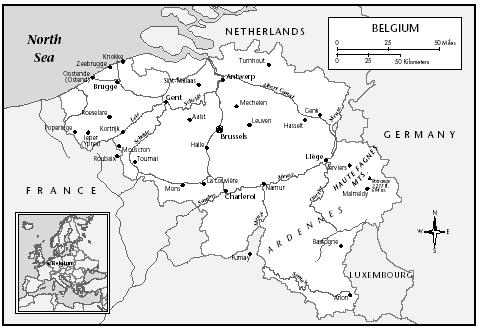
Symbolism. Political symbolism differs with the region and the sociopolitical environment. The strongest national symbols are the Monarchy and the national soccer team. The national anthem, the Brabançonne , is not taught in schools and not widely known. The original song, written during the revolution of 1830, exalted the revolt against the "arbitrary" power of the Dutch king. It was later changed to a milder version that placed obedience to king and law on the same footing as liberty. Symbols are more numerous and more powerful in the Flemish political culture than in the other parts of the country or the nation as a whole.
Much of the mythology in Flanders involves the Lion of Flanders. The lion has been the symbol of the counts of Flanders since the Crusades, and became the symbol of Flemish emancipation since independence.
The oldest elements of Flemish symbolism were developed as Belgian "myths" before the emergence of the Flemish movement. A successful fourteenth-century revolt of cities in the former county of Flanders against a count from the French royal family became an expression of early Flemish/Belgian nationalism. The Flemish national day celebrates the victory of the Flemish militias over the royal French army at the Battle of the Golden Spurs, named after the trophies collected from slain French knights. The Flemish national anthem (the Vlaamse leeuw ) was composed in 1847. It was adopted as the Flemish movement's anthem in 1900 and became the official anthem of the Flemish community in 1973. Other strong Flemish symbols are the National Song Feast (ANZ) held annually in Antwerp since the early 1930s, in which Flemish songs are mixed with modern expressions of culture.
On the last Sunday of August, the Flemish movement gathers in a pilgrimage at World War I battlefields. Because of the Christian roots of the Flemish movement, the main slogan associated with this has a strong religious connotation. The Walloon movement borrowed the rooster from France as a cultural symbol. The Francophone community celebrates its national day on 21 September, but it is not emphasized heavily, and an anthem was not adopted until 1999.
In the Middle Ages, Brussels adopted Saint Michael killing the dragon as its patron saint and coat of arms. However, when Brussels became a separate region, its leaders felt they had to find symbols to support the separate identity of the region. They chose the iris and set the regional celebration day in the period in which that flower blossoms.
History and Ethnic Relations
Emergence of the Nation. Although the name of the modern state refers to the original Celtic inhabitants after the Roman conquest in 44 B.C.E. , the population was Romanized and adopted the Latin language. Latin gave rise to a series of dialects including, in the southern part of the country, the Walloon dialects. The name "Walloon" derives from a Germanic word meaning "foreign," and refers to the Roman Empire.
Flemish culture came to northern Belgium as a consequence of the Germanic invasions of the fourth century. In the central and southern regions, the Germanic invaders formed small kingdoms and adopted their subjects' culture.
Until the eighth century, conquests and divisions modified the borders of these kingdoms. The last division took place at the treaty of Verdun (843) between the grandsons of Charlemagne, who divided the Holy Roman Empire into three parts, of which the central part, Lotharingia, encompassed the territories between the Netherlands and Italy, including present-day Belgium. However, Lotharingia was absorbed into the German Empire, and the idea of a state between France and the German Empire did not resurface until the fourteenth century. The Burgundian princes inherited, conquered, bought, or received in dowry most of the fiefs constituting the Netherlands, Belgium, and northern and eastern France. They established their court in Brussels and brought the French language to their states. The possessions of the dukes of Burgundy were inherited by the Habsburg dynasty in 1477.
In the middle of the sixteenth century, a religious civil war led to the division of the Low Countries into two parts. The north became the Netherlands, a Dutch-speaking, Protestant state. The south remained Catholic and was associated with the Habsburg dynasty until the French conquest in 1794. Under the Habsburg rulers, the use of Flemish progressively declined, but the position of French was reinforced during the French administration (1794–1814).
After the defeat of Napoleon, the Congress of Vienna established the kingdom of the Netherlands, including present-day Belgium. However, the policy of King Willem I van Oranje Nassau (1772– 1843) of favoring the Dutch language and the Protestant religion, led to the revolution of 1830, after which Belgium became independent.
National Identity. The Belgian state stipulated freedom of language in its constitution. However, partially as a reaction against the pro-Dutch policy of Willem I, French became the de facto state language. The new government made it the language of administration and education, hoping that it would replace Flemish, Walloon, and German dialects. A Flemish revival initiated by members of the lower clergy and some intellectuals (the so-called Flemish movement) led, over the next two centuries in Flanders, to the progressive replacement of French by Flemish as the language of education, justice, and administration.
In the nineteenth century, the Flemish cultural heritage was an important basis for the definition of a Belgian identity, emphasizing the religious difference with the Netherlands and the wars with France. Thus, the growth of the Flemish movement weakened the feeling of national identity not only in Flanders but in the entire country, leading to the growth of a distinct Brussels identity.
Ethnic Relations. The rehabilitation of the Flemish language met with strong resistance from the Francophone establishment and political parties. The "linguistic question" has been the source of political tension for more than a century. In reaction to the Flemish movement, a Walloon movement emerged, mostly linked to the Francophone socialist party. Although the Flemish are the majority population, the Flemish political parties have promoted reforms to protect their language against perceived Francophone domination.
Another Flemish grievance came from the emigration of Francophone inhabitants of Brussels to the surrounding Flemish villages, after which inflation in real estate prices made it impossible for the original Flemish population to stay. The main problem from the Flemish point of view is that the Francophone "migrants" do not learn Dutch but continue to live and work in French-speaking environments and send their children to French schools in Brussels. The Flemish "law of the land" holds that newcomers have to learn the official language
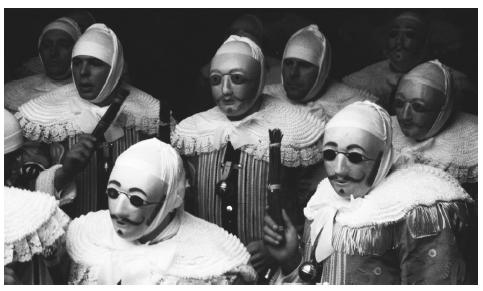
The main threat to peaceful ethnic relations comes from the extreme-rightist parties, particularly the Vlaams Blok, which thrives on resentment against immigrant communities and the national state. The Vlaams Blok has also recruited some of the most radical elements of the Flemish movement. The rise of the extremist party was historically made possible by the ambiguous attitude of many mainstream Flemish politicians and journalists toward the wartime collaboration of a fraction of the Flemish movement with Nazi Germany. Collaboration in Wallonia was equivalent but was not linked to anything similar to the Flemish movement.
The extreme right in Wallonia has always been fragmented into very small parties, with little political influence. However, one of the main points of the Vlaams Blok, the resentment of the influence of the other language community, is also a major point in the program of the FDF party.
Urbanism, Architecture, and the Use of Space
Belgium is essentially a country of medium-size and small cities, many with long histories. In the central parts of these cities, rows of terraced houses are built among a network of ancient churches and marketplaces. Opulent buildings often feature a Belfry in the central marketplace, or, as in Brussels, a city hall and corporation houses.
In nineteenth century, many working-class cities were built in mining and industrial areas. In some cities, new middle-class suburbs were linked to urban centers by large avenues. The stylistic height of this expansion is illustrated by the Art Nouveau houses built by Victor Horta. In the first half of the twentieth century, garden cities were built to provide humane lodgings for the working classes. Today, as the population continues to leave the central cities, one-family houses are organized in small suburban villages.
There is some contrast between the north and south in the use of traditional, rural spaces. While the north has many isolated farms between villages, the southern farms tend to be grouped in villages on both sides of a road.
Food and Economy
Food in Daily Life. Bread and potatoes are the traditional staple foods. Most meals include, pork, chicken, or beef, and Seafood is popular in the northern part of the country. The national drink is beer, but wine is imported in large quantities. In northern cities, popular dishes include mussels with fries and waterzooi a broth of vegetables and meat or fish. Throughout the country, French fries are eaten with steaks or minced raw meat. Cooking is traditionally done with butter rather than oil; there is also a high consumption of dairy products. Immigration has ensured a diversity of "ethnic" restaurants and is gradually changing the eating habits of the residents in culturally mixed areas.
Food Customs at Ceremonial Occasions. Christmas is an occasion for large family meals with grandparents and cousins. There are many other occasions for long meals at public and private celebrations, such as weddings, funerals, and the days devoted to city and parish saints. Pastries are associated with religious and civil occasions. At Christmas, people eat sweet bread in the form of the child Jesus; at Easter, children are told that eggs are dropped in the gardens by flying churchbells; and sugar beans are distributed to those who visit a young mother.
Basic Economy. Belgium is heavily dependent on foreign trade. Since the closing of its coal mines in the 1960s, the country has had to import most of its fuel, although it is an important producer of nuclear energy. Although less then 3 percent of the population is involved in agriculture, farm production is very intensive. The southern part of the country has not recovered from the closing down of steel plants and coal mines; the economy of the north, traditionally based on trade and textile manufacturing, has fared better.
Commercial Activities. Belgium is considered the world's diamond capital. The annual turnover of the diamond industry was about $23 billion (U.S.) in 1996 and contributed nearly $3 billion (U.S.) to the Belgian economy. Belgium is also an important producer of several industrial minerals, including limestone, dolomite, whiting, sodium sulfate, silica sand, and marble. Livestock raising is the most important single sector of Belgian agriculture, accounting for over 60 percent of agricultural production. In 1998 there were about 3.2 million head of cattle, 7.4 million hogs, 147,000 sheep, and 22,000 horses. Belgian farmers breed some of the finest draft horses in the world, including the famous Percherons.
Major Industries. Industry, highly developed in Belgium, is devoted mainly to the processing of imported raw materials into semifinished and finished products, most of which are then exported. Steel production is the single most important sector of industry, with Belgium ranking high among world producers of iron and steel. In 1998, Belgium produced 342,000 tons of crude copper. The country also produces significant amounts of crude zinc and crude lead. The bulk of metal manufactures consists of heavy machinery, structural steelwork, and industrial equipment. The railroad equipment industry supplies one of the most extensive railroad systems in Europe. The textile industry, dating from the Middle Ages, produces cottons, woolens, linens, and synthetic fibers. The chemical industry manufactures a wide range of products, from heavy chemicals and explosives to pharmaceuticals and photographic supplies.
Trade. Belgium is heavily dependent on trade, mostly with neighboring European countries (76 percent of exports and 71 percent of imports are with EU partners). More than half the energy is nuclear produced, which makes the country less dependent on imports of fossil fuels. Most of the trade, for imports as for exports, is in machinery, chemicals and metal products. An exception is the important place of cut diamonds in exports. In the past decade, an increasing number of spin-offs of universities has reinforced Belgian exports in high-tech products.
Division of Labor. Less than 60 percent of the population was employed as of 1999, including 19.5 percent in part-time jobs. The repartition in sectors is as follows: 73 percent in services, 25 percent in industry, and 2 percent in agriculture.
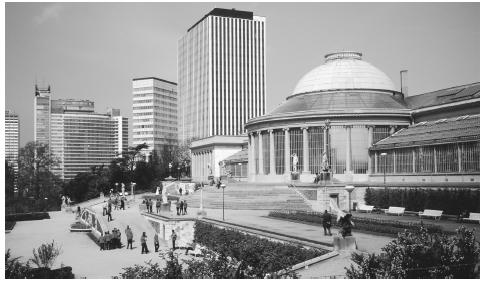
Social stratification
Classes and Castes. There is a relatively even distribution of wealth, with 5 to 6 percent living close to the poverty line. The majority of the population is middle class. The vast majority has equal opportunities for education and a professional life. There is a very inclusive social security system.
Deep societal cleavages have led to the construction of "pillars," integrated social structures based on ideology. Although "pillarization" is becoming less important in social life, its influence is clearly noticeable. These pillars encompass every aspect of societal life, including youth, sports and leisure movements, education at all levels, trade unions, health funds, newspapers, and political parties. The three main pillars are the Christian-democrat pillar, the socialist pillar, and the liberal pillar. Until the 1990s, the positions of these pillars were mutually agreed on and anchored through a complex system of "political nominations" in which people with a philosophical affiliation to one of the pillars were appointed to key societal positions as magistrates, top public officials, and leaders of state-controlled companies. The public is turning against this aspect of the pillars, but their influence and power are considerable, especially when their interests are challenged.
The major cleavages are ethnocultural (Flemish speakers versus Francophones), philosophical (the church versus liberals) and economic. The importance of these cleavages has changed over time, often leading to the establishment of new coalitions.
Symbols of Social Stratification. Wealth is most often expressed through houses and cars. In general, there are few external behavioral class markers. The upper classes act discreetly, and people make little distinction between classes or social strata. Exceptions sometimes appear in youth culture, where fashion can turn into a means of social distinction.
Political life
Government. Belgium is a federal state, consisting of its three language communities that are responsible for the control of culture and education, and its three regions that are responsible for controlling the economic development, infrastructure, and environment. In Flanders, the institutions of the Dutch-speaking community and the Flemish region have merged, leaving the country with six governments and six parliaments. This complex structure has resulted from the increasing federalization of the country, which in turn has resulted from the demands
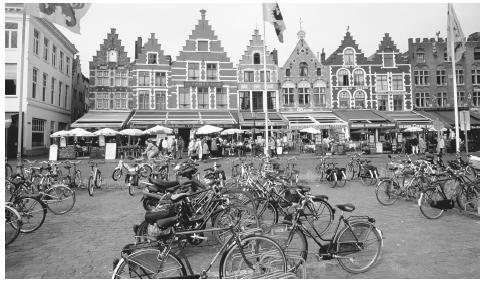
The political system is based on discussion and compromise between different interest groups. The term "Belgian compromise" applies to solutions reached in this way: complex issues are settled by conceding something to every party. The resulting agreements often leave room for interpretation due to their complexity.
Leadership and Political Officials. The major political parties are the Liberals, Socialists, and Christian-Democrats, complemented by regionalist parties as the VolksUnie and the extreme right-wing Vlaams Blok in Flanders. Their Francophone counterpart is the Front Démocratique des Francophones (FDF). In some communes on the linguistic border and in Brussels, Francophone and Flemish parties form cross-political union lists such as Union des Francophones (UF) or Samen. The green parties entered the federal government coalition in 1999. All political parties (with the exception of the regionalist parties), have evolved from unitary parties into a Flemish party and a Walloon party since the 1970s. Politicians often rise through the pillars, mostly in Flanders; in Wallonia and Brussels, on the other hand, politicians usually have a stronger local base, often as mayors. The few independent candidates with political potential are quickly recruited by the parties.
Social Problems and Control. Policing and the judiciary are organized at the national level. After a major police reform in 1999, there will be one police force with authority to operate in the entire nation. Delays in handling cases in Brussels are often related to a lack of bilingual magistrates. In recent years, civilian patrols without legal powers of intervention have come into existence, but their function is mainly to deter robbers.
Informal social control is much stronger in small villages and towns than it is in large cities. Organized crime is rare except in drug trafficking, prostitution, and illegal immigration. Organized crime is mostly controlled by foreign criminals such as the Russian mafia. There are relatively few murders and armed robberies. The most common crime is property theft.
Military Activity. Belgium is a member of NATO, and its military forces have been completely integrated into the alliance. The military has to live with tight budgets, and military expenditure is seen as a necessity, not a source of national pride. The military is professional and separate from the rest of society and is subject to strong parliamentary control.
Social Welfare and Change Programs
A series of Public Centers of Social Aid (CPAS) exist in the cities, supporting impoverished residents. A ministry of social promotion supports initiatives for the reduction of inequality.
Nongovernmental Organizations and Other Associations
Belgium hosts many international organizations and hundreds of lobbying-groups, but their presence has little direct impact on social life. The most influential organizations are the Catholic Church and its affiliates and social organizations related to the pillars, such as trade unions.
Gender Roles and Statuses
Division of Labor by Gender. The occupational gender gap is decreasing, particularly among younger generations (67.5 percent of men working versus 50.2 percent of women working). In fact, the higher occupational rate of women is due to an increase in part-time jobs in services: less than 3 percent of men work part-time, but nearly 30 percent of women do.
The Relative Status of Men and Women. The unemployment rate in (1999) was slightly lower for men than for women. The wage differentials between men and woman are the lowest in the European Union, with women earning on average 91 percent of a man's salary.
Marriage, Family and Kinship
Marriage. There are no social or ethnic barriers to marriage, although proximity and social models influence the choice of a spouse. Young people marry and have children less often and later than former generations did. The divorce rate has increased to about one in three marriages.
Domestic Unit. The domestic unit usually is composed of the parents and up to three children, although immigrants from North Africa often have more children. Women still do more of the domestic work, but this is perceived as a matter of negotiation by the couple.
Inheritance. In the absence of a will, the children inherit equally from a deceased parent. However, if one spouse survives the other, he or she keeps the entire estate. The law limits the proportion of the estate that can be disposed of by will, depending on the number of children.
Kin Groups. The extension of the family group generally is limited to first cousins. However, there are a growing number of family associations in the upper and middle classes through which the descendants of an individual gather once or twice a year.
Socialization
Child Rearing and Education. The values parents attempt to transmit to their children are honesty, good manners, tolerance, and responsibility, but there are regional and class differences. Obedience and cleanliness are considered most important in Flanders and among workers, the unemployed, and shopkeepers; loyalty and courage are important in Wallonia; and independence and autonomy are more appreciated in Brussels and among university graduates, executives, civil servants and shopkeepers. The trend, however, shows a weakening of these oppositions, most notably between religious and hard work values in Flanders and socialist values in Wallonia.
Since 1956 all public and private schools have been supported by the state, and education is virtually free. In theory, access to the best schools depends on grades, language, location, and social position influence parental choice. Children must remain in full-time education until age sixteen and in part-time until age eighteen.
Higher Education. In arts, business, teacher training, and nursing, higher education is organized outside universities. Education is federalized and is conducted in the language of the individual region. Although language education in generally very good, there are no official bilingual institutions. The Catholic University of Louvain and the Free University of Brussels are divided into Flemish and Francophone parts. State universities are located in provincial towns. A high percentage of young people enter higher education (there were 307,000 students in higher education in 2000).
Etiquette
There are not many interactions in the streets, as residential, working and leisure areas tend to be distinct. Among young people, especially Francophones,
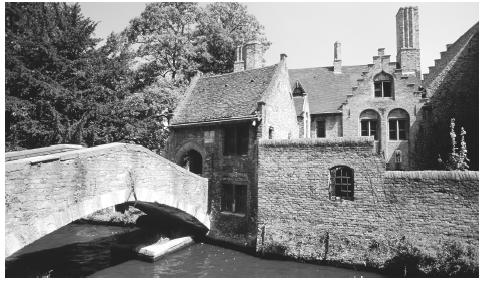
Religion
Religious Beliefs. Catholicism is the main religious faith. The government financially supports the Catholic and Protestant churches as well as the Jewish and Muslim faiths. The Catholic Church controls an important network of schools with 70 percent of the pupils in secondary education and two main universities. Religious beliefs and practice declined during the twentieth century, but approximately 65 percent of Belgians believe in God. Many people who say they do not believe in God take part in religious rituals for major events such as baptisms, weddings, and funerals. Minority faiths include Muslims, Jews, and Protestants.
Medicine and Health Care
There is a modern health system with state, university, and private hospitals. Health insurance is mandatory and is paid for by employers. Self-employed people must have insurance for major risks and pay according to their income.
Secular Celebrations
Many important secular celebrations are linked to the ethnic identity of the Flemish and the Francophones. Labor Day on 1 May and World War I Armistice Day are national holidays. The National Day on 21 July commemorates the taking of an oath of fidelity to the Constitution by the first king, Leopold I (1790–1865). Mardi Gras is celebrated in several cities.
The Arts and Humanities
Support for the Arts. Aspiring artists and musicians receive training in evening schools that are free of charge and accessible in most of the country. At the postsecondary level, there are many state-supported conservatories and art schools. An extensive network of art galleries supports avant-garde and traditional artists. Museums in the main cities also support artists by buying some of their work and making it known to the public.
Literature. Sometimes it is denied that there is a Belgian literature, with only Flemish and Walloon or French and Dutch writers who happen to be Belgian citizens. However, authors such as Charles
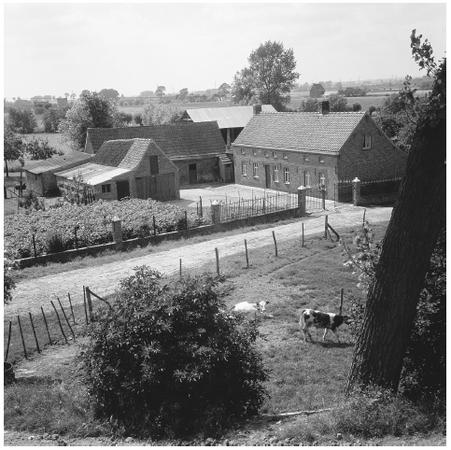
Graphic Arts. The golden age of graphic arts lasted from the fourteenth century to the seventeenth century and was embodied mostly in painting. The Flemish Primitives school of painting (fourteenth and fifteenth centuries) made the region the main artistic center of Europe outside of Italy. Artists such as Jan Van Eyck (1395–1441) and Rogier Van Der Weyden (1400–1464) were interested in spatial composition and psychology and rendered the colors and textures of living and material objects with realism. The main artistic figure of the next century was Pieter Breughel the Elder (1525–1569), with his lively paintings of peasant life.
Pieter Paul Rubens (1577–1640) was the most famous painter of his time, receiving commissions from European sovereigns. His main focus was on the human figure. Rubens influenced Anthony Van Dyk (1599–1641) and Jacob Jordaens (1593–1678). The graphic arts declined until the late nineteenth century, when James Ensor and René Magritte (in the twentieth century) revived the avant-garde. The most innovative works of living artists can be seen in contemporary art museums in Antwerp and Ghent.
Performance Arts. The Franco-Flemish style dominated European music in the fifteenth and sixteenth centuries, with composers such as Josquin des Prez and Orlando di Lasso. In the twentieth century, the most famous Belgian musician was the singer Jacques Brel. Several living classical composers are active. The harmonica player Toots Thielemans is the most famous jazz musician. The Blindman Kwartet combines jazz, pop, and classical music.
The presence in Brussels between 1959 and 1987 of the French choreographer Maurice Béjart stimulated a new generation of choreographers. The main theatrical centers are De Singel in Antwerp and the Kaai Teater in Brussels. Several theaters and orchestras are supported by the government.
Bibliography
Bawin-Legros Bernadette, ed. Familles, Modes d'Emploi: Étude Sociologique des Ménages Belges, 1999.
Cloet, M., and F. Daelemans, eds. Godsdienst, Mentaliteit en Dagelijks Leven: Religieuse Geschiedenis in Belgïe sinds 1970/Religion, Mentalité et Vie Quotidienne: Histoire Religieuse en Belgique depuis 1970, 1987.
Hoet, Jan, ed. S.M.A.K. The Collections of the Museum of Contemporary Art/Ghent, 1999.
Foblets, Marie-Claire. Les Familles Maghrébines et la Justice en Belgique: Anthropologie Juridique et Immigration, 1994.
Geirlandt K. J., ed. L'Art en Belgique depuis 1945, 1983.
Hasquin, Hervé, ed. Dictionnaire d'histoire de Belgique: les hommes, les institutions, les faits, le Congo belge et le Ruanda-Urundi, 2000.
Hermans, Theo, Louis Vos, and Lode Wils, eds. The Flemish movement: A Documentary History, 1992.
Heyrman, Peter. Middenstandsbeweging en Beleid in Belgie, 1918–1940: Tussen Vrijheid en Regulering, 1998.
Pearson, Raymond. The Longman Companion to European Nationalism 1789–1920, 1994.
Ruys, Manu. The Flemings: A People on the Move–A Nation in Being, 1973.
Schryver, Reginald de, ed. Nieuwe Encyclopedie van de Vlaamse Beweging. 1998.
Vande Putte G. Belgica Creola: Le Contact des Langues en Périphérie Bruxelloise/Taalcontact in de Brusselse Periferie, 1999.
Verstraete, Pieter Jan. Bibliografie van de Vlaamse Beweging: Deel 5: 1986–1990, 1998.
Voyé, Liliane, et al. Belges, Heureux et satisfaits: Les Valeurs des Belges dans les Années 90, 1992.
Witte, Els, Lode Vraeybeckx, Alain Meynen, Politieke Geschiedenis van België, 1990.
—J EAN DE L ANNOY AND R UBEN A. L OMBAERT
And helped a ton with my research project.
i just wish there was more about the actual people and also holidays
Maybe you could modify it by making it more modern or more interesting.
It obviously has good feedback, so don't feel offended or put off about it.
Yours sincerely, S.W
Every single pupil at my school looked at it and said its boring,
boring, boring even the teachers rejected it
Good day!
I am a filipina and have a belgian fiancee.He visited me in Philippines 2 times already.He told me he can marry me only if I got pregnant and he can bring me to belgium if I got pregnant.Is he telling the truth? I have so many doubts ane questions again.Why is he giving me that condition.He keeps saying me that he give to his government that he will come to philippines and stay here if he retired already.I told him to get those requirements so we can marry but he
said belgium government will just appr
ove it if I got pregnant is he telling the truth?He just visited me this month last week and we are planning that I will got pregnant but sad to say I did not got pregnant that is why I am here again waiting for him to visit me again.I told him maybe we can get tourist visa so I can be with him 3 months so we have big chance tha I will be pregnant but he told me that if we do that I cant see him because I am a tourist and belgium government will not allow him anymore to send me money.Is that true? I really have so many questions inside my mind.How about fianceee visa can we get that? So we can marry in belgium? I was badly hurt when he told me that belgium will allow us to get married if I got pregnant.Why its like that what if I will not be pregnant again what will happen to us we cant marry anymore? Please help me I want answers from my questions.I am missing him too much I wanna be with him.Please give me advice on what I should do.I will wait for your answers.
Thanks,
Edessa
I'm also told that there are over 400 different beers in Belgium. Well that is a fun fact!
Because of this I completed my project
They are awesome!!!
it has a lot of info and it's helping me a lot with my brochure project at school
danke :DD